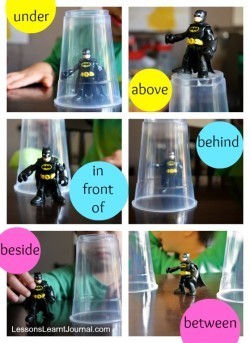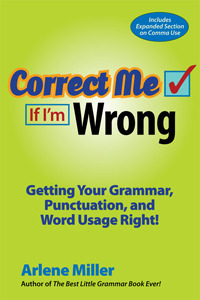More Misplaced Modifiers: Prepositional Phrases

Prepositional Phrases
In last week’s post, we talked about the correct placement of the words only and almost. The week before that we talked about dangling participles. This week we continue our discussion of the correct placement of modifiers with prepositional phrases.
Here is an example of a prepositional phrase that is in the wrong place in the sentence:
She walked her dog in a bikini.
Unclear? Fuzzy? Silly? Yup! Those are words that describe incorrectly placed prepositional phrases. Although we might assume that it was the girl who was wearing the bikini, who really knows? The sentence says it was the dog who was wearing the bikini because the phrase in a bikini comes right after dog.
First, let’s talk about what prepositional phrases are. A phrase is a small group of related words without both a subject and a verb. Prepositional phrases can function as adjectives or adverbs, describing nouns or verbs, so they commonly tell where, when, or what kind.
All prepositional phrases have the same basic structure. They begin with a preposition (one of the parts of speech), followed by an article (not always, but much of the time), and then a noun or pronoun. Remember that the articles are a, an, and the. There may be additional words, such as an adjective describing the noun in the phrase.
Here are some prepositional phrases that tell where:
over the rainbow
in the kitchen
around the corner
at school
up the spiral staircase
Here are some prepositional phrases that tell when:
after the game
before breakfast
past midnight
within the hour
Here are some prepositional phrases that tell what kind or which one:
with the blue stripes
for my friend
Prepositional phrases should generally be placed near what they describe. Often they fit best at the beginning of the sentence. One place they do not belong is near a word that they don’t describe.
Let’s look back at our first example:
She walked her dog in a bikini.
There are always many ways to fix a sentence. One way to fix this one would be to put the prepositional phrase in a bikini at the beginning of the sentence.
In a bikini, she walked her dog. Or,
Wearing a bikini she walked her dog. Or
While she was wearing a bikini, she walked her dog.
Here is another example. In this sentence, the mistake is much less obvious:
Several people congratulated him on his speech at the end of the meeting.
Can you find the problem? It sounds as if his speech was at the end of the meeting. The sentence probably means to say that several people congratulated him at the end of the meeting.
At the end of the meeting, several people congratulated him on his speech.
Here are a few more examples:
I heard about the meeting in the men’s room.
Was the meeting in the men’s room? That is what the sentence says. More likely, you heard about the meeting while you were in the men’s room.
While I was in the men’s room, I heard about the meeting. Or
In the men’s room, I heard about the meeting.
Did you see the hurricane on the morning news?
Was there really a windy newsroom?
Did you see the report about the hurricane on the morning news?
That desk is perfect for a college student with large drawers and sturdy legs.
I guess you see the problem here!
That desk with large drawers and sturdy legs is perfect for a college student.
As you can see, the mistakes in placement are easy to make! But they are also easy to fix. All it takes is a little care while writing and maybe some proofreading. Although much of the time, the reader will “get” what you are saying, it is much clearer to put things where they belong.
Arlene Miller, also known as The Grammar Diva, has written the two popular books you see here as well as a grammar lesson plan book. She is a teacher, author, speaker, grammar and business writing workshop facilitator, and a copyeditor. She is a member of Redwood Writers and a board member of the Bay Area Independent Publishing Association. Come hear her grammar workshop at the Sonoma County Book festival on September 21 at 3:15.
Click on either book to buy!





